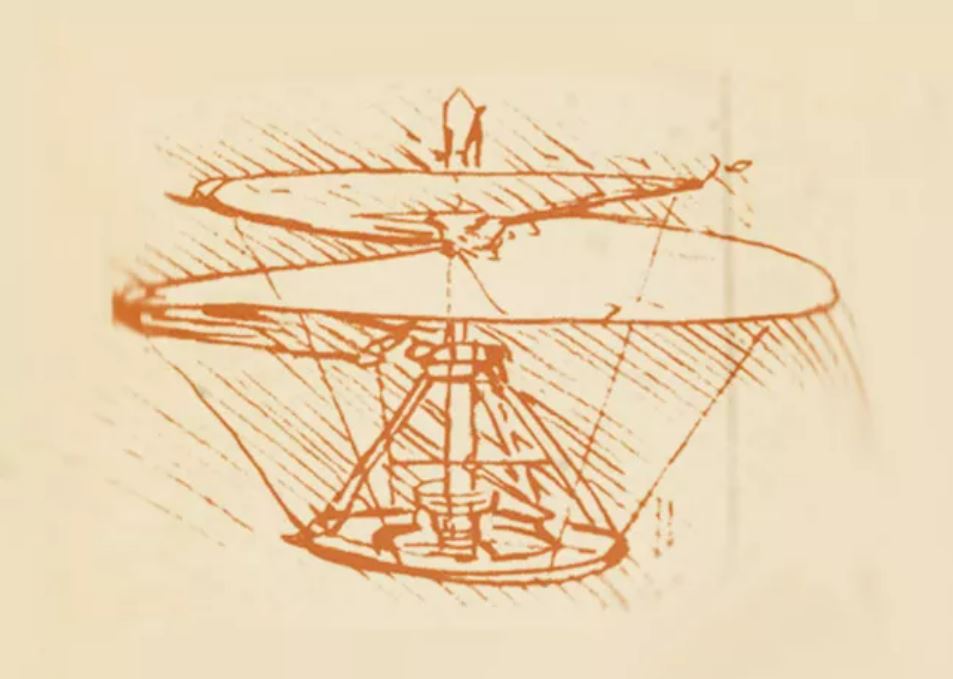Leonardo da Vinci drew up a creative concept for a one-person helicopter driven by an “aerial screw” in the late 1480s. You might have seen his sketches and wondered if one of the choppers could fly.
We finally have the answer. The genius of Italy was correct.
A University of Maryland engineering team began designing and testing the underlying technology in 2019 as part of a design competition. After that, team member Austin Prete constructed Crimson Spin, an autonomous quadcopter drone based on da Vinci’s screw-like design, and flew it on multiple short excursions over the previous year and a half.
Prete, a graduate student at the university’s aeronautical engineering department who built the airplane for his master’s degree, said, “I was very shocked it functioned.” He and the rest of the team were first hesitant, but after several computer simulations and 3D-printed screw prototypes revealed encouraging patterns, they became more enthusiastic about da Vinci’s concept.
Last week, he presented his findings at the Transformative Vertical Flight 2022 conference in San Jose, California, along with the first footage of the aircraft flying.
Even though it’s doubtful that a 15th-century flying corkscrew would deliver an Amazon box anytime soon, the concept is a beautiful example of how modern technology is departing from the traditional airplane and helicopter design. A collection of unique aircraft that can take off vertically like a helicopter and then fly horizontally like an airplane were displayed at the conference. Kitty Hawk, Airbus, Transcend air, and Jaunt hope to revolutionize shipping by transporting people in air taxis.
Even though Prete only created a tiny drone, the technology may be used in a plane large enough to transport a person. He stated, “I feel it should be able to scale up quite effectively.”
Materials of the present day

Da Vinci couldn’t access materials made available to the Maryland graduate student.
State-of-the-art Construction materials from the Renaissance era, like wood and leather, are too thick for airplanes. Da Vinci also lacked portable energy sources.
The aerial screw design was made practical by Prete’s access to metal, plastic, electric motors, batteries, and computer control systems. In addition, Prete employed computer-aided design and computational fluid dynamics tools to develop prototypes and simulate aerodynamics within a computer, which was also beneficial.
The design was also made possible by today’s quadcopter technology. These are controlled by minor adjustments in propeller speed that tilt the plane in one direction or the other. According to Prete, attempting to develop a single-shaft design like a typical helicopter would have been far more complex. So instead, helicopters utilize intricate gearing and controls to keep each rotor’s tilt constant as it rotates.
However, several obstacles include the aerial screws’ heavier weight and potential for instability.
Aerodynamics that are new
Prete noticed that Crimson Spin could stay airborne because of some impressive aerodynamics.
Delta-wing aircraft, such as the supersonic Concorde, have large triangular wings that generate a swirling vortex of air immediately past the wing’s leading edge. A low-pressure zone is created by the vortex, which can boost lift. According to simulations, a comparable vortex occurs around the outer rim of the flat surface of the aerial screw, swirling along with the entire structure and imparting an upward force, according to Prete.
The aerial screw produces less downwash than conventional propellers due to these aerodynamics. Prete explained that this implies less dust, grit, and other blowing debris beneath the surface. It’s also likely to be quieter.


